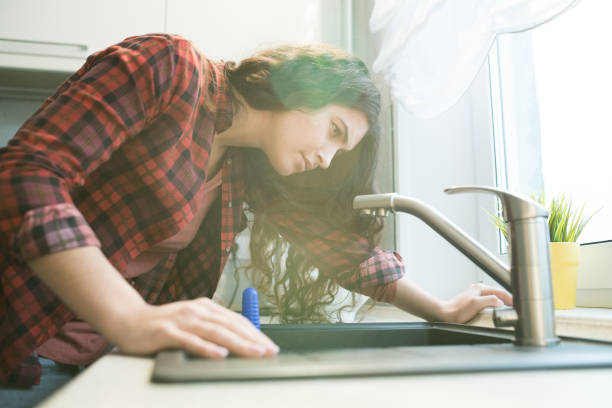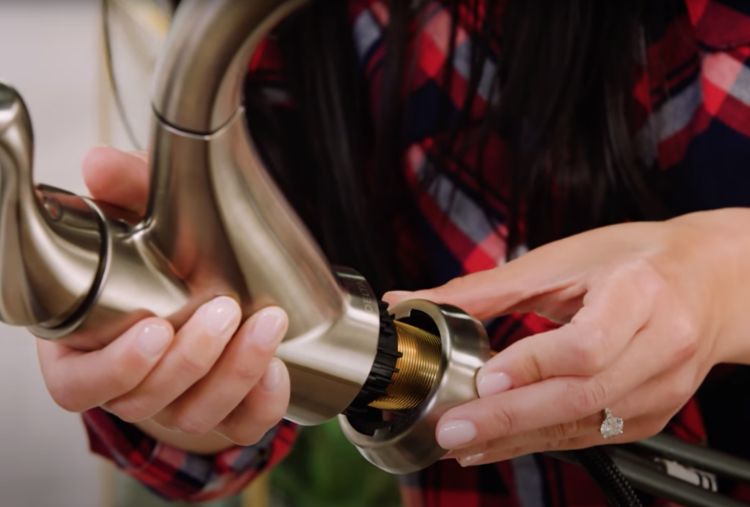My Importance of Dealing with a Malfunctioning Faucet
My Importance of Dealing with a Malfunctioning Faucet
Blog Article
Are you looking for critical information around Should I Repair or Replace a Leaky Faucet??

Leaking taps might look like a minor hassle, but their impact goes beyond just the aggravation of the audio. From drainage to sustaining unnecessary financial expenses and health and wellness threats, overlooking a leaking faucet can bring about numerous repercussions. In this article, we'll look into why it's vital to address this usual household problem quickly and properly.
Waste of Water
Ecological Impact
Dripping taps contribute dramatically to water waste. According to the Environmental Protection Agency (EPA), a solitary tap leaking at one drip per secondly can throw away more than 3,000 gallons of water each year. This not just stress water sources but additionally influences ecosystems and wildlife based on them.
Financial Expenses
Raised Water Bills
Beyond the ecological influence, trickling taps can blow up water costs substantially. The built up waste gradually equates right into greater utility costs, which could have been avoided with prompt fixings.
Prospective Property Damages
Additionally, prolonged leaking can result in damage to components and surfaces surrounding the tap. Water build-up can cause discoloration, corrosion, and even architectural issues if left neglected, resulting in added repair work prices.
Health and wellness Concerns
Mold and Mold Growth
The consistent visibility of moisture from a trickling tap creates an excellent environment for mold and mold development. These fungis not just jeopardize interior air high quality however additionally present wellness threats, especially for individuals with breathing conditions or allergies.
Waterborne Illness
Stationary water in trickling taps can come to be a breeding ground for bacteria and various other pathogens, raising the danger of waterborne conditions. Contaminants such as Legionella microorganisms flourish in stagnant water, potentially resulting in major health problems when ingested or inhaled.
DIY vs. Professional Repair work
Pros and Cons of DIY Repair Work
While some might try to take care of a leaking tap themselves, do it yourself repair services come with their very own collection of challenges. Without correct understanding and tools, DIY efforts can intensify the concern or bring about insufficient repairs, prolonging the problem.
Benefits of Working With an Expert Plumber
Employing an expert plumber makes sure that the underlying root cause of the leaking tap is resolved successfully. Plumbing technicians possess the expertise and devices to diagnose and repair tap concerns successfully, saving time and decreasing the danger of more damages.
Step-by-Step Guide to Fixing a Dripping Tap
Devices Required
Before trying to repair a trickling tap, collect the needed devices, consisting of a flexible wrench, screwdrivers, replacement components (such as washers or cartridges), and plumber's tape.
Typical Faucet Issues and Their Solutions
Determine the type of faucet and the particular issue causing the drip. Usual issues include worn-out washing machines, rusty valve seats, or faulty O-rings. Describe maker directions or online tutorials for detailed guidance on repairs.
Safety nets
Normal Maintenance Tips
To avoid leaking taps, perform regular upkeep such as cleaning up aerators, checking for leakages, and replacing damaged parts immediately. Additionally, take into consideration setting up water-saving gadgets or updating to a lot more effective components.
Value of Prompt Fixes
Attending to leaking faucets as soon as they're discovered stops further water waste and prospective damages, eventually saving both water and cash in the long run.
Impact on Residential Or Commercial Property Worth
Perception of Well-Maintained Property
Preserving a residential or commercial property in good condition, consisting of dealing with upkeep problems like dripping taps, improves its regarded value and charm among prospective customers or tenants.
Influence on Resale Worth
Characteristics with well-kept plumbing components, consisting of faucets, command higher resale values in the realty market. Attending to dripping faucets can contribute to a favorable perception throughout residential property examinations and settlements.
Environmental Obligation
Private Payment to Preservation
Taking duty for fixing leaking faucets aligns with more comprehensive efforts towards water conservation and environmental sustainability. Every person's activities jointly make a substantial influence on protecting precious sources.
Lasting Living Practices
By prioritizing punctual repair work and embracing water-saving practices, people contribute to sustainable living techniques that benefit both present and future generations.
Verdict
Resolving a dripping tap exceeds plain comfort; it's an essential step towards preserving water, decreasing monetary costs, and safeguarding health and wellness and residential property. Whether via DIY repair work or expert aid, acting to deal with trickling taps is a tiny yet impactful means to advertise liable stewardship of resources and contribute to a healthier, more lasting future.
How to Fix a Dripping or Leaky Faucet
A leaking faucet is one of the most common problems that homeowners encounter, but it being commonplace doesn’t make it any less annoying. The constant drip drip drip of a leaking bathtub faucet, showerhead, or sink tap can disturb your home’s serenity. Left neglected, a dripping faucet can also result in higher water bills and discoloration or mold growth in your sink or plumbing fixtures.
Fortunately, you don’t have to be a trained plumber to know how to stop a dripping faucet. With some basic tools, replacement parts, and a little patience, leaky faucet repair is a breeze. In this article, we’ll explain what causes dripping faucets and how you can fix them.
What Causes a Leaking Faucet?
Kitchen and bathroom faucets come in all manner of designs, but most involve some combination of valves, O-rings, seals, and washers. The O-ring is usually the weakest link, but any one of these pieces can wear down over time. Heat, moisture, temperature fluctuations, minerals, mold, and movement can contribute to warping and corrosion, breaking the watertight seal. This just comes with the territory of being a homeowner. Everything is always subject to wear and tear, and some component parts of your appliances and fixtures need to be replaced on occasion. At least replacement O-rings are cheap!
More rarely, dripping faucets can be a symptom of excessively high water pressure. Were this the case in your home, you would probably notice that the leak is not isolated to one faucet. Water pressure issues are harder to resolve on your own. We recommend contacting a professional plumber if you suspect your water pressure is too high.
How to Fix a Dripping Faucet
Pipe wrench or monkey wrench Allen wrench set Screwdrivers Old towel or rag Shut off the water.
Before you do anything, you need to turn off the water to keep from drenching your kitchen or bathroom. You should find a valve under the sink and against the wall. Once you’ve turned this valve, try turning the faucet on to confirm that the water source has been cut off.
If you can’t locate your local valve for the faucet you’re working on, you can always shut off the water to the house at the main valve. Of course, this will prohibit anyone from using the sinks, showers, or toilets while you’re working on the faucet that’s giving you trouble.
Plug or block the drain.
You’ll be disassembling the faucet and removing some small bits of hardware. Plug the drain with a stopper or rag to avoid the possibility of a small screw falling into your P-trap.
Take apart the faucet assembly.
There are several varieties of kitchen and bathroom faucets, each with its own manner of assembly. For detailed instructions on how to disassemble your faucet, you can refer to the fixture’s manual or contact the manufacturer. If you know whether you have a ball, disc, cartridge, or compression faucet, you can find detailed schematics online.
In general, you need to begin by removing the faucet handles. You might notice a small screw that you’ll need to remove with a screwdriver or Allen wrench. If you don’t see any visible securing hardware, it’s likely hidden under a decorative cap that can be unscrewed or popped off with flathead screwdriver.
Remove each piece methodically, consulting a schematic when necessary. Take notes or arrange the pieces in such a way to make it easier to correctly reassemble the faucet later.
Remove the cartridge.
Once you’ve removed the handles and securing hardware, you should be able to remove the valve cartridge or stem. Some cartridges will slide right out. Other faucet models will require you to loosen a nut with a pipe wrench before you can remove the valve stem.
Examine the exposed hardware.
With the cartridge or stem removed, inspect the component parts. Check the rubber O-rings for wear and tear. Also examine the seat washer for corrosion or other damage. These pieces are usually the responsible parties for a dripping faucet, but it’s worth inspecting the other component parts while you have the faucet disassembled.
Find replacement parts.
Once you’ve identified which faucet component has failed, find an identical replacement. Your local hardware store should have O-rings, seat washers, and other standard components in stock. If you have a luxury or uncommon faucet, you may have to contact the manufacturer for a replacement part.
It’s a good idea to take your old parts with you to the hardware store so you can compare them with the store’s inventory and be sure you’re purchasing the correct replacement.
Reassemble the faucet.
With your new parts in hand, reconstruct the faucet and handles. Don’t be tempted to overtighten screws or nuts. You might think this could create a better seal, but it can instead damage or bend a delicate part of the assembly and create a new problem for you.
Turn on the water and test the faucet.
The only thing left to do is test your work. Unplug the sink, turn the water back on, and try the faucet. Congratulate yourself on a job well done!
https://www.libertyhomeguard.com/how-to-fix-a-dripping-or-leaky-faucet/

I stumbled upon that write up on 4 Common Reasons for a Leaky Faucet when doing a lookup on the search engines. Enjoyed reading our blog posting? Please quickly share it. Help others check it out. I praise you for being here. Return soon.
Report this page